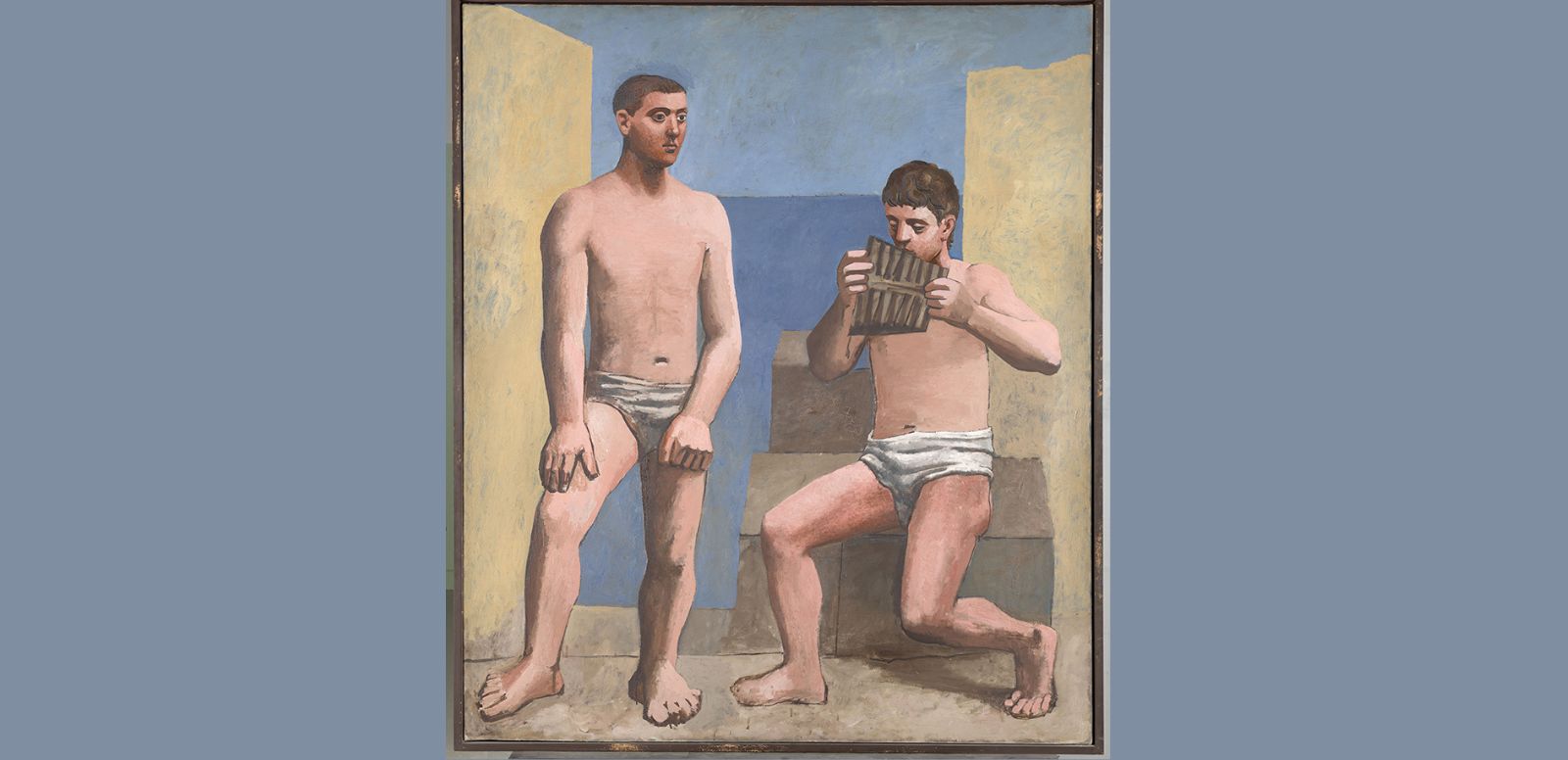
© Sucesión Picasso, VEGAP, Madrid, 2023.
Pan's Flute (1923) is part of the collection of masterpieces of the Picasso National Museum-Paris and is a masterpiece of the classicist Picasso. It was created during a period that marked the painting of the time, the so-called "return to order", at a time when Charles Edouard Jeanneret-Gris, better known as Le Corbusier, was developing a revolutionary architecture inspired by the golden rules of ancient architecture.
Painted during Picasso's summer stay at Cap d'Antibes, the male figures symbolize both contemporary fishermen like Ulysses; shepherds from the Bucolics of the ancient poet Virgil singing their poems with Pan's flute, and modern young men in white bathing suits. The slight sway in the posture of the character on the left is typical of classical language: known as "contrapposto" it gives it a timeless character. Solid, motionless, the two appear extremely concentrated, one on his instrument and the other gazing into the distance, with a melancholy expression.
References:
Pan's Flute. Musée national Picasso-Paris. Available at: https://www.museepicassoparis.fr/fr/la-flute-de-pan

